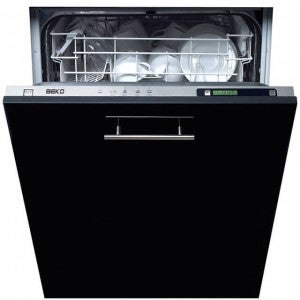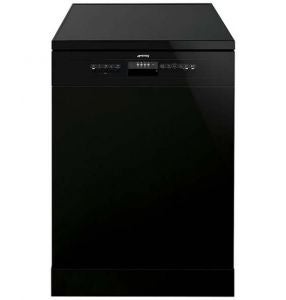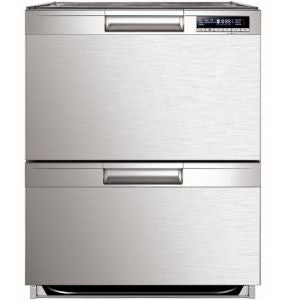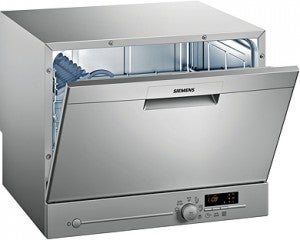Do you miss the good old days when you used to spend half an hour at the sink after every meal, plunging your hands into dirty water scrubbing pots, plates and cutlery? Of course, you don’t! Thanks to dishwashers, most of us no longer have to worry about this chore. And our lives have become considerably easier as a result.
However, as companies have churned out more and more models with different strengths, weaknesses and prices, choosing the right dishwasher has become a difficult chore in itself.
What models are available? Which is the right choice for you? If you’re buying a new one, or replacing an old one, our dishwasher buying guide can help pick out the best dishwasher for you.
Dishwasher Buying Guide. In this guide we cover the five key things you need to consider before buying a new dishwasher:
Dishwasher capacity
The first thing you must get right when selecting a dishwasher is its capacity. When quoting a dishwasher’s capacity, most manufacturers describe it in terms of the number of place settings it can hold.
A place setting refers to the standard amount of crockery and cutlery a person will use during a three-course meal. This generally includes one bowl, one plate, a knife/fork/spoon combination and a cup.
When choosing the right size for you, you’ll need to consider the number of people in your household and how many meal’s worth of place settings they’re likely to use during a day. Remember to include snacks and extra mugs and glasses in your calculations. As a rough guide:
|
Size of household (people) |
Place settings (per day) |
|
1-2 |
6-9 |
|
2-4 |
9-12 |
|
4+ |
12+ |
Once you’ve figured out the capacity of your dishwasher, the next step is to determine which dishwasher will fit in your kitchen.
Size of dishwasher
Of course, you need to ensure that your new dishwasher fits your kitchen. Therefore, you’ll need to carefully measure the dimensions of the space in your kitchen.
Dishwashers come in various sizes. The smallest ones are in the slimline category, around 45cm in length. And the standard size is approx 60cm.
It’s crucial to measure the correct size, as 5mm can be the difference between fitting snugly, and having to buy a different one. So follow the old tried-and-tested rule of measuring twice!
Types of dishwashers
There are four main types of dishwashers:
- Integrated dishwashers
- Freestanding dishwashers
- Drawer dishwashers
- Compact dishwashers
 |
Integrated dishwashers
|
 |
Freestanding dishwashers
|
 |
Drawer dishwashers
|
 |
Compact dishwashers
|
Dishwasher features
To narrow down your choice of dishwasher further, take into consideration the following features:
-
Energy and water efficiency
Every dishwasher in New Zealand carries an energy efficiency label that displays:
- A star rating – the more stars, the more energy efficient the appliance
- Annual energy consumption – a kWh per year figure, based on average expected use
The energy efficiency of a model can have a big impact on its running costs, and can save you money on electricity over its lifetime. The below numbers are based on running a dishwasher at the large end of the scale, used once every day.
Usage details
Capacity (place settings): 15
Average number of uses per week: 7
| Star rating | Annual energy use | Annual running cost | Greenhouse gas emissions |
| Two | 504 kWh | $132.20 | 0.07 t |
| Four | 247 kWh | $64.78 | 0.03 t |
The five-year outlook
Based on the above usage, the running costs over five years are:
- Two-star dishwasher – $661
- Four-star dishwasher – $323.90
This is a total difference in running costs of $337.10
These numbers do give pause for thought, especially as an appliance may well last ten years. Even a half-star difference between models has the potential to add up significantly over time.
Save on power with Canstar
If you really want to save money on your electricity bill, the easiest and quickest way is to switch providers. When was the last time you reviewed how much you’re paying for your power? Electricity providers in NZ change their pricing and plans all the time to stay competitive. So if you’ve been with the same provider for yonks, chances are there is a far better value deal out there for your home. You could potentially save hundreds of dollars a year by switching to a more competitive plan.
Take a look at your next power bill. Once you know how much you’re paying in fixed and variable charges, it’s easy to jump online and compare different power companies and the deals they’re offering. A good place to start is Canstar’s most recent review of electricity providers, here is a snippet of our top scoring providers.
Canstar Blue’s NZ power company review
Our latest review of NZ power companies compares them on customer satisfaction and value for money. The table below is an abridged version of our full results.
^ By clicking on a brand or 'details' button, you will leave Canstar Blue and be taken to either a product provider website or a Canstar Blue NZ brand page. You agree that Canstar Blue NZ’s terms and conditions apply (without limitation) to your use of this service,to any referral to a product provider from our website, and any transaction that follows. Canstar Blue may earn a fee for referrals from its website tables, and from sponsorship (advertising) of certain products. Payment of sponsorship fees does not influence the star rating that Canstar Blue awards to a sponsored product. Fees payable by product providers for referrals and sponsorship may vary between providers, website position, and revenue model. Sponsorship fees may be higher than referral fees. Sponsored products are clearly disclosed as such on website pages. They may appear in a number of areas of the website such as in comparison tables, on hub pages and in articles. Sponsored products may be displayed in a fixed position in a table, regardless of the product’s rating, price or other attributes. The table position of a sponsored product does not indicate any ranking, rating or endorsement by Canstar Blue. See How we are funded for further details.
Canstar Blue NZ Research finalised in April 2023, published in June 2023.
See Our Ratings Methodology
For more information on sniffing out the best power deal, check out our story: Simple Guide to Finding the Cheapest Power Deals. And for the full result of our electricity Customer Satisfaction Award, just click on the big button at the end of this story.
-
Half-load, eco-mode and other wash cycles
Most non-basic dishwashers nowadays come with multiple different wash cycles, depending on how heavy your load is, the time of day and whether you’re looking to save on your energy bill. The two-most common cycles are eco-mode and half-load cycles. There are more advanced ones, like the drying cycle, which dries your dishes before the load finishes, which can be found in higher-end models. A lot of people tend to end up using just one or two of the different cycles on offer, so don’t make the mistake of thinking more wash cycles = better for you. Find ones that you think you’ll end up using a lot.
-
Flexible shelves and baskets
If you have many different sized pieces of crockery then your dishwasher might not have enough room to hold every single piece of crockery you want to wash at once. If this is the case, then you should look into dishwashers that have removable shelving and different layout options, to help free up some of that unused space.
-
Delayed start
A lot of appliances now come with a delayed start option. This allows you to set a time for your dishwasher to begin its cycle. A lot of people tend to set their start time to the middle of the night, when electricity rates can be cheaper, or while they’re at work, so they don’t get irritated by the noise, which leads us into the final feature you should be wary of …
-
Noise levels
This one is self-explanatory: nobody likes the noises that kitchen appliances make, so you should always check the noise levels of your chosen dishwasher before buying it. Most models will have information on their noise levels available somewhere, be it on the dishwasher itself or on a website. If they don’t, check out some customer feedback to make sure your dishwasher won’t keep you awake at night!

Dishwasher installation
Replacing an existing dishwasher is a relatively simple procedure. It usually requires little more than unscrewing a few plastic pipes to connect your new appliance to your sink’s plumbing. However, if you are installing one in your kitchen for the first time, you’ll need to consider:
- Power supply
- Water supply
- Waste water drainage
If you are confident in your plumbing skills, then by all means save yourself some money and DIY. However, if not, then it’s best to leave it to a professional. Most plumbers offer dishwasher installation services. And while paying someone to install your appliance can be a little pricey, it also ensures the job is done quickly and without any hassle.
There are four main different types of dishwasher installations:
-
Freestanding
As long as the dishwasher has the three necessities listed above – power, water, drainage – a freestanding unit can be placed anywhere there is an available space.
-
Built-in
These are the most commonly installed dishwashers. They are installed in a specifically designed place, usually under a kitchen bench.
-
Semi-integrated
A semi-integrated dishwasher displays the control panels at the top of the dishwasher, while the body of the dishwasher blends in with the kitchen cabinetry. They are mainly used for aesthetic reasons and, as a result, are also more difficult and costly to install.
-
Fully-integrated
Fully integrated dishwashers have their front doors and controls completely covered by a kitchen panel. Again, they are costly to install.
Compare electricity providers with Canstar Blue!
Enjoy reading this article?
You can like us on Facebook and get social, or sign up to receive more news like this straight to your inbox.
By subscribing you agree to the Canstar Privacy Policy



Share this article